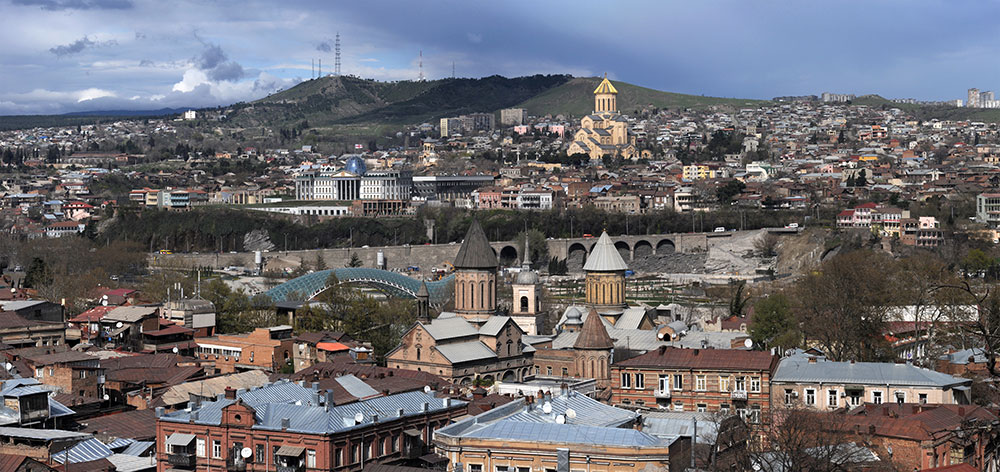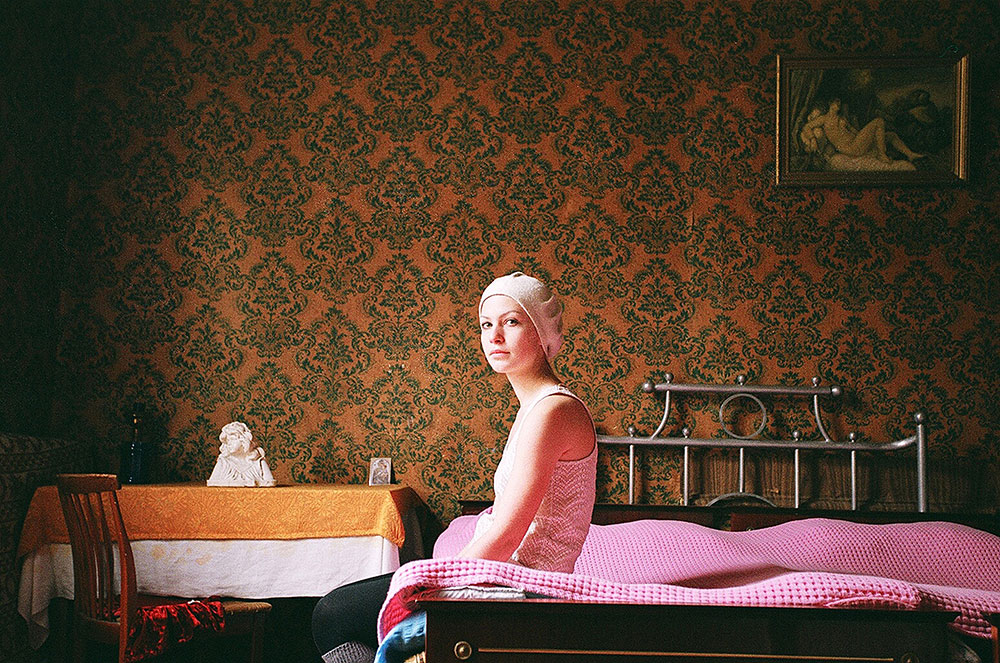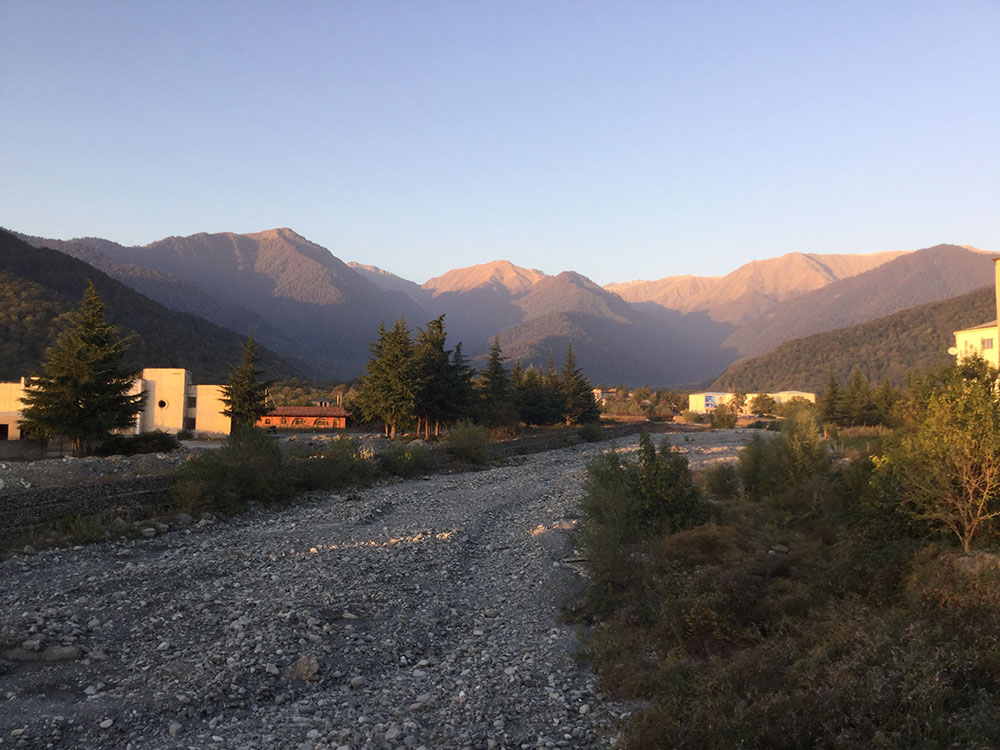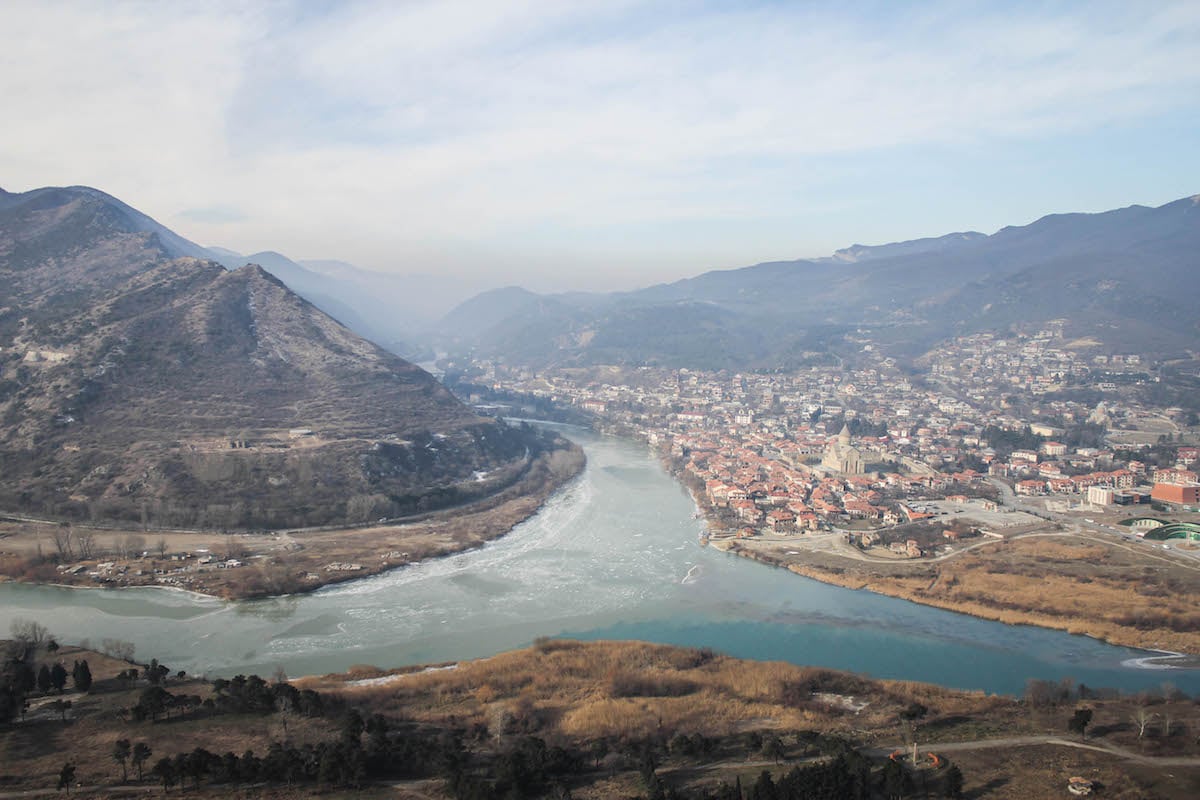
Tbilisi is fast becoming one of the New East’s premier tourist destinations — but there’s more to Georgia than its capital. The Calvert Journal presents our pick of the best of the rest the country has to offer.
The wind blows warm and sweet as you step out of Tbilisi airport. The taxi drivers mingle around offering you a ride. You get in a car, start the inevitable carefree chat with the driver, and it comes as no surprise when he offers you a stopover for khinkali and kindzmarauli in Abanotubani, the capital’s ancient sulphuric baths district (his treat, of course): welcome to Georgia’s faultlessly welcoming capital.
In the days ahead you will find yourself in the friendly company of a guest-house keeper explaining the meaning of surneli (a Georgian word meaning a “dear, evocative aroma”), a charming jewelry-maker selling you Melchior rings on the Dry Bridge, a retired rugby player whistling to Georgian pop ballads as he passes your morning puri (Georgian bread) through a tiny window in the basement bakery on Lermontovi Street. Basking in Tbilisi’s irresistible hospitality, you might find it hard to leave the city for more. Needless to say you should — all the best of casual encounters are the ones you meet on the road, and Georgia has a plethora of stunning destinations more than worth the trip. Here are couple of picks and untamed territories to lure you out of Tbilisi. And once on the road, who knows where life will take you? For more tips on what to do in Georgia, download the new Tbilisi addition to our series of New East Travel Guide apps.
Tbilisi Sea
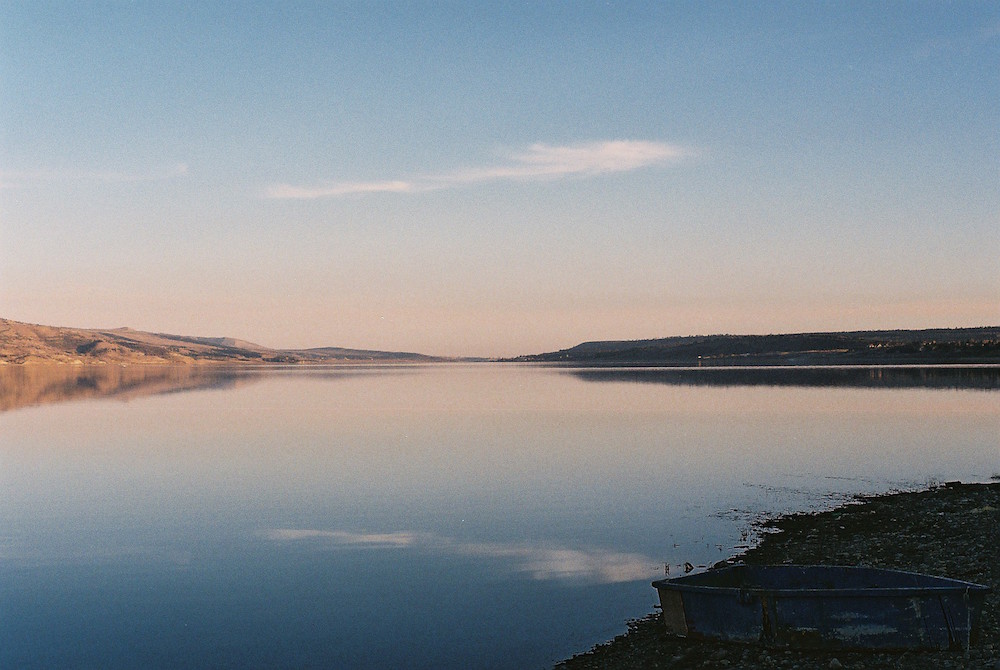
Tbilisi’s waters run deep and hot (hence its name, which means “the city on warm waters”). Within the city you can see this in the waterfall not far from the Sulphuric Baths and the turbulent flow of the Kura, the narrow and swift mountain river that traverses the town. Climbing Tbilisi’s cobblestone paths, seeing mountain ridges curve all the way to the horizon, it is almost impossible to imagine a sea somewhere nearby: but in fact there is one. Right behind the pile of black rock commonly known as Zurab Tsereteli’s Chronicles of Georgia monument lies a reservoir known as the Tbilisi Sea, opening up into a breath-taking view of both the Sea and the Didi Digomi high-rise district. Ask a taxi driver to take you around the reservoir and, if you are partial to the melancholic allure of a city’s outer limits, head back towards the centre through “Chinatown” and the Varketili district.
Jvari

This one might seem an obvious choice: signs for “Jvari” will be staring down at you from every tourist board and the dusty windscreens of hire cars around the city. Set in the mountain wilds not far from Tbilisi, it’s easy to dismiss Jvari as too touristy; the wise course, perhaps, is to set your alarm clock early, rent a car and head there before the crowds arrive. It was here on the mountain that Saint Nino, the bringer of Christianity to Georgia, erected a cross —“Jvari” in Georgian. But leaving such holy matters to one side, this is a place to lose yourself in the otherworldly beauty, where rocks and rivers meet, haze-lit in the morning sun.
Uplistsikhe
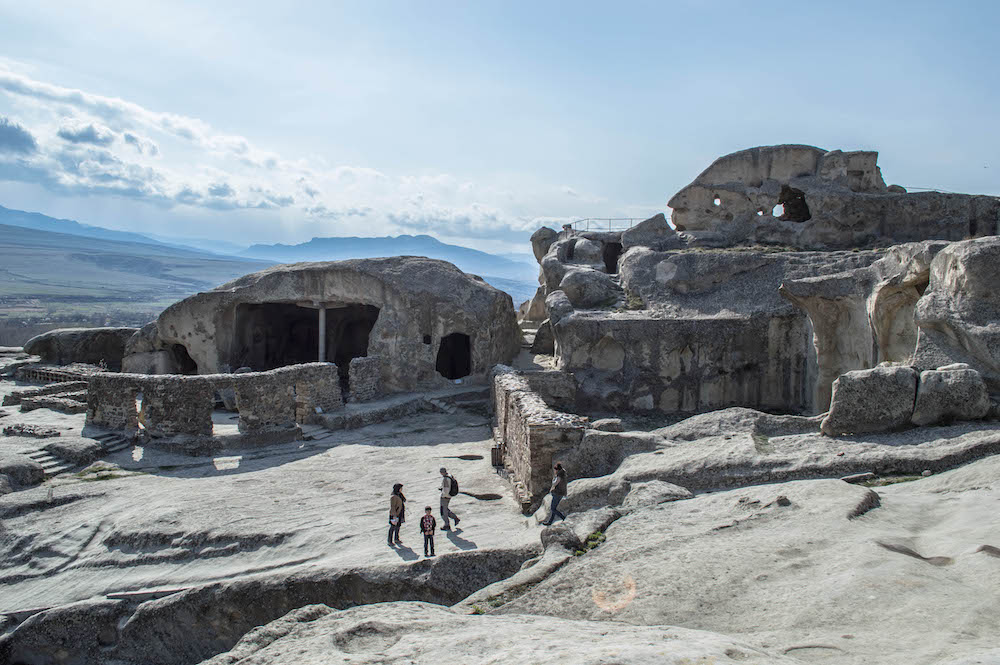
The cave city of Uplistsikhe (which means “the Lord’s fortress”) was one of Georgia’s first, before being abandoned by its residents in the 19th century. Uplistsikhe comprises various levels of caves and recesses carved into the rock face. It is a mirage among the sand dunes, a fairy-tale city in the middle of the rock formations known as Georgia’s “Grand Canyon”. The journey from Tbilisi, traversing Martian landscapes, brisk mountain streams and the birthplace of Joseph Stalin, is around two hours from end to end. Getting there on your own is complicated (you’ll have to take a bus to Gori and change, before walking several kilometres), so the best option is going with a driver and staying at Jvari en route. Rental cars start at 140 lari ($58) per day in low season.
Chiatura
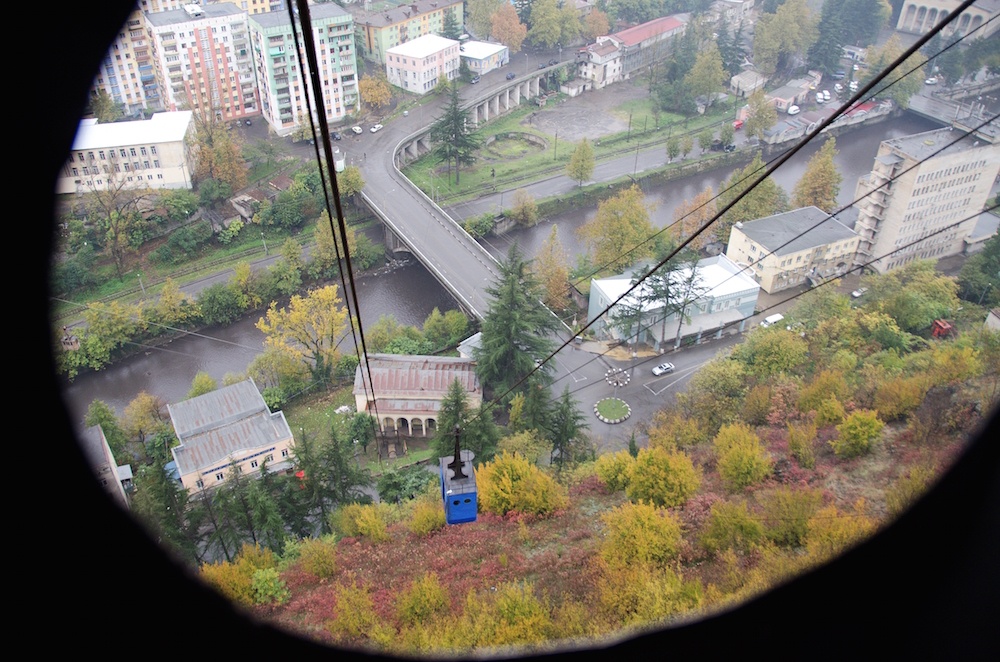
Set deep within a lush green river gorge about 50 kilometres east of Kutaisi is the small ex-mining town of Chiatura. The surrounding hills are rich in manganese, and from the 1950s onwards the area was transformed by the arrival of Stalinist heavy industry. Catching a marshrutka into Chiatura, you wind your way past looming, dormant mining equipment overgrown with weeds. The main attraction in the town itself, though, are the cable cars. Originally a dozen of these contraptions were built to allow miners living in the apartment blocks teetering on the clifftops to get into town; now only two are running. Stepping inside one of these creaking, rickety iron boxes is like stepping into a time machine back to the golden age of Soviet sci-fi modernism. As you’re lifted hundreds of metres into the air and buffeted by winds, such utopian thoughts will probably be pretty far from your mind, however. The cable car station is on the central Gomi-Sachkhere-Chiatura-Zestaponi road past the Liberty Bank; you can reach Chiatura by marshrutka from Tbilisi’s Didube Bus Terminal or from Kutaisi.
Tskaltubo
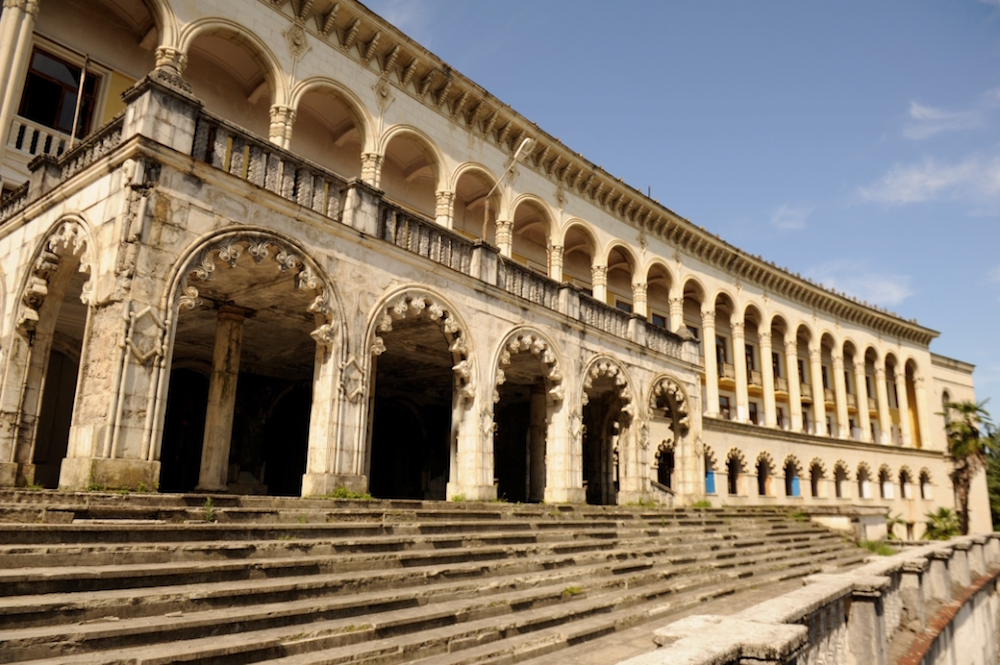
Tskaltubo is a small town west of Kutaisi in the central region of Imereti. In Soviet times, this was one of the most famous spa towns in the Caucasus thanks to the various springs in the vicinity. Nowadays most of these grandiose establishments are boarded up or have been converted into ramshackle homes, but in the central Mineral Water Park there are still a few old-school treats to be found. Spa No. 6 is the biggest and still offers a range of therapeutic delights: from hot mud wraps to dips in a “slightly irradiated” bath. Apparently this was Stalin’s favourite health retreat, and walking around the marbled corridors with their Socialist Realist motifs, you can certainly imagine the big man kicking back and getting some quality me time. You can reach Tskaltubo by marshrutka from Tbilisi’s Didube Bus Terminal or from Kutaisi.

